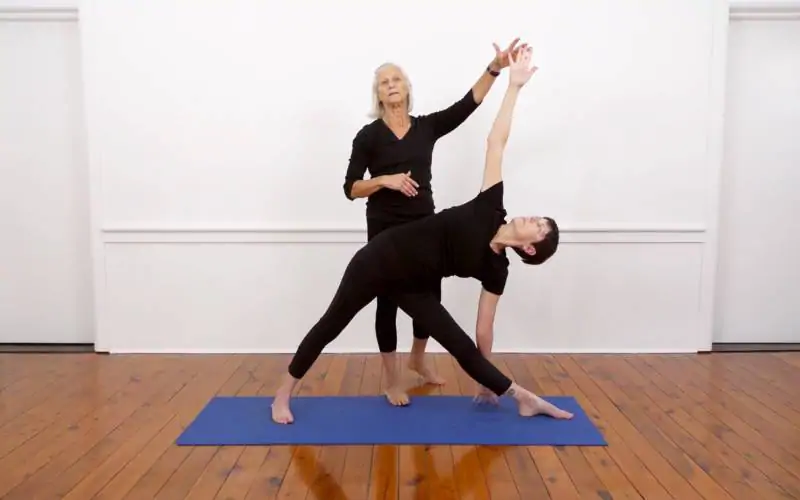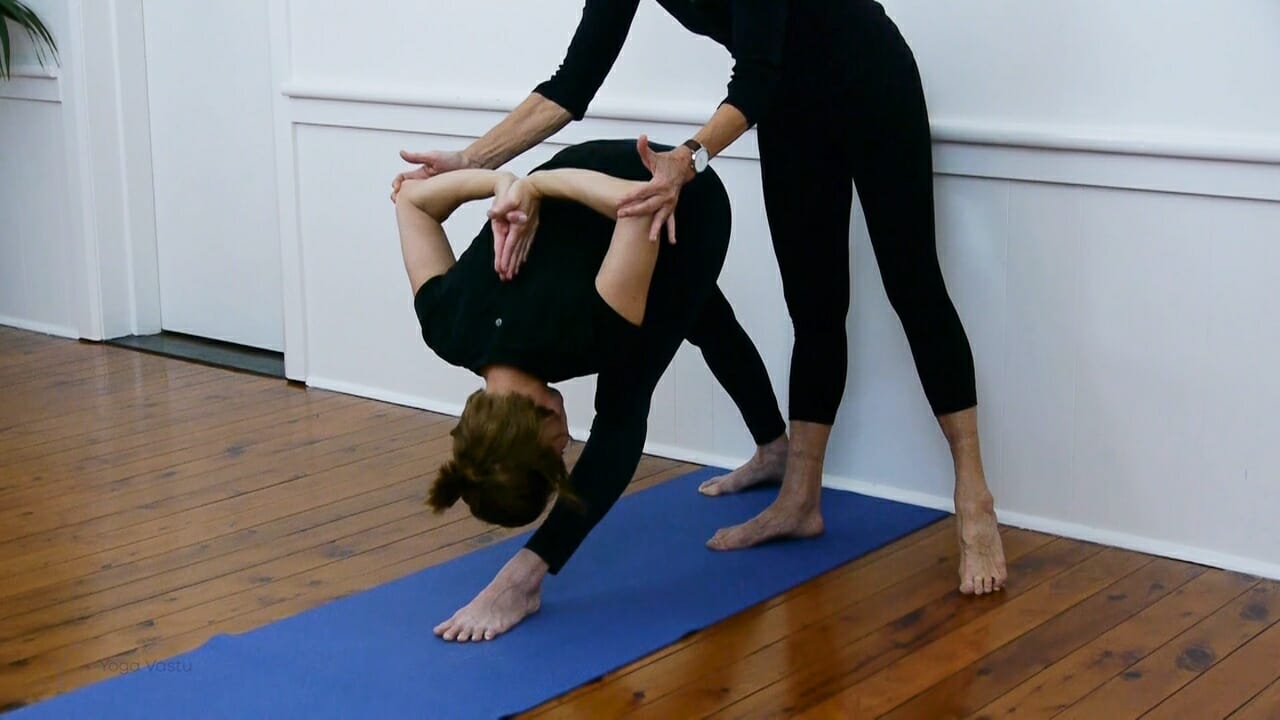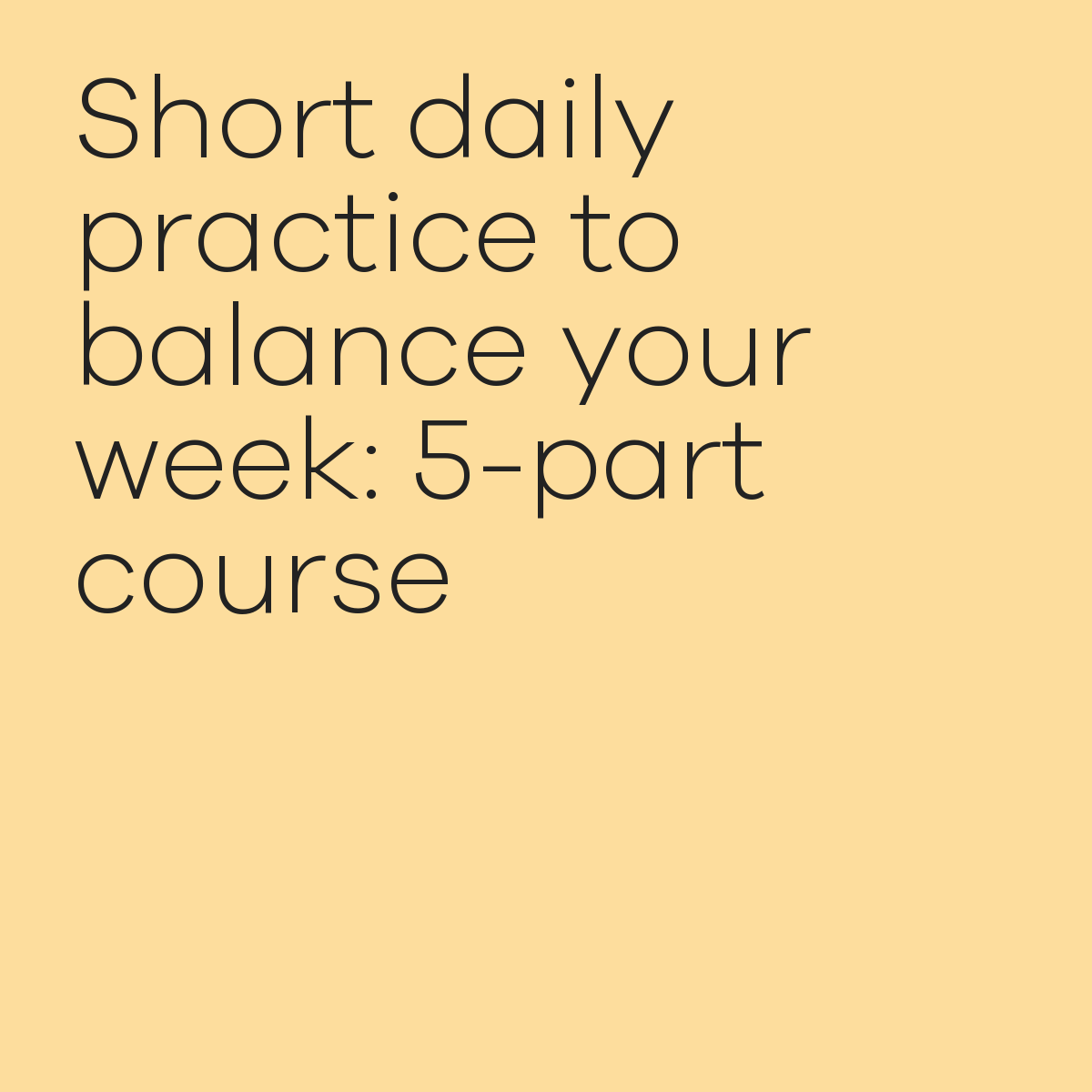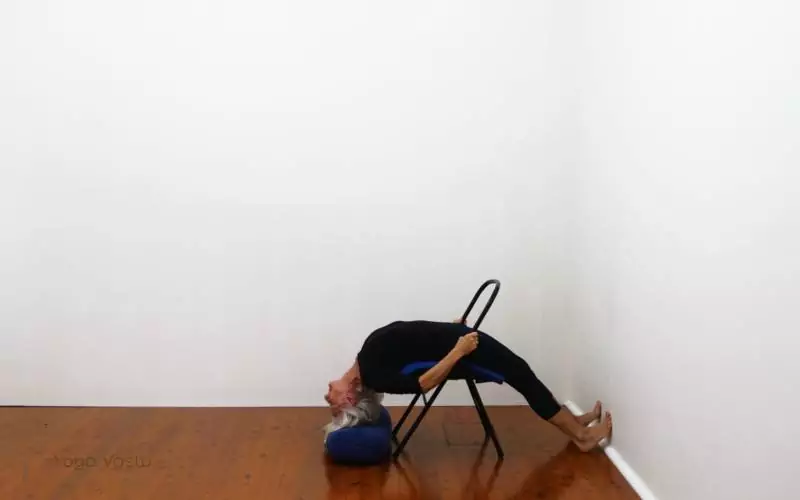Yoga and your health while under quarantine
The pandemic of COVID-19 has suddenly thrown many of us out of our usual routines. As many yoga studios temporarily close it is important that we maintain our health and well-being by finding ways to stay active and take care of our mental health.
As we are all under the same conditions worldwide at this moment, I have had many requests for sequences that might be most suitable at this particular time. You can find sequences and poses below.
During this difficult time, you may be supporting your loved ones, working from home, taking on unexpected stress, or feeling less physically active. Stress and immobility can impact many parts of the body, including weakening the immune system and increasing inflammation. A recent study published in the Journal of Behavioral Medicine suggests promising benefits of yoga practice in boosting your immune system and decreasing inflammation in your body.
While we often count on yoga to provide flexibility, strength, and spiritual wellbeing, it may also provide a much-needed resilience to the coronavirus and its symptoms.
Yoga for managing anxiety, stress and boosting immune system
For most of us, there is certainly the desire to stay well and strong physically in the face of this virus, but many of us might also be experiencing a degree of anxiety due to all the various aspects of uncertainty we are facing. There might be momentary disbelief, insomnia after an overload of news, some occasional anger, and even at times moments of denial and a desire to put it all aside.
These also coincide with general symptoms of grief as well. That probably doesn’t surprise any of us. A number of people have asked about all the various immunity sequences they are finding online. I agree that these are probably very useful to keep in mind, and it’s good to prioritise certain immune-boosting postures each day.
In addition, given all the other emotions, and knowing that stress in itself diminishes our ability to have a good immune response, it is useful to consider a wider range of possibilities for what we can get from our practice. It seems we are in this for the long haul, so it is helpful to have a range of sequence possibilities to choose from. Remember, we might not always be fully aware of which emotion is ruling us on a given day. Yoga usually helps, even by trial and error.
Using Yoga to communicate with your body
Yoga is a method of communicating with the body. It provides the space to listen to how you are feeling. With my practice, I find it can be revealing of how I’m feeling each day.
Practice gives us a comforting routine, and it has the advantage that it’s always available to us. We don’t even need to leave the house. Handy right now. It gives us steadiness, a moment of stillness and inner focus when our attention gets pulled away into the sea of bad news. It creates a feeling of calm and stability. This is good for us individually but also for those who live with us.
Be willing to change. Sometimes the poses you start to focus on don’t feel right. I may start with backbends, for example, and just begin to feel jangled instead of uplifted. I might think I need to do forward bends, and find instead I am getting a bit depressed. Be willing to change and to experiment a little, and to reflect on what you are feeling and experiencing during the practice.
We also now might have time to delve into those areas of weakness or stiffness that we all find in our practice. Simply working with an area of difficulty regularly may give an unexpected result, which gives further motivation. It can offer us an opportunity to set some personal goals when even next week can be hard to plan for in the outside world.
BKS Iyengar, yoga and immunity
At a time of need in India not so many years ago, Guruji wrote up an immunity strengthening sequence. And when you have a look at what he proposed, it was largely a series of inversions, supported and unsupported, held for a little longer than might be usual for everyone in order to derive a deeper benefit from the health-giving aspects of those poses.
Inversions bring a good balance in our system, and that will further help support our body defences. The sequence includes some chest opening poses over bolsters and a chair. These poses and their benefits are all applicable to our Covid-19 world. It is important to practice an immune system sequence regularly. Explore a few different options according to your practice capacity.
You would do well to keep incorporating inversions and some supported chest opening postures in your yoga sequences. This helps to support our immune system whilst we work to address the other emotional reactions many of us are experiencing.
Yoga sequences
Yoga sequences to practice to boost immunity
Immune support and nerve calming sequence
At this period of heightened stress, anxiety, and a feeling of being out of control, it’s really important to stay in touch with your body. This sequence is designed to do 3 things: engage your immune response, uplift your mood by improving circulation in your chest and lungs, and calm your nervous system.
Immune support and nerve calming sequence
This sequence is designed to do 3 things: engage your immune response, uplift your mood by improving circulation in your chest and lungs, and calm your nervous system.
Yoga sequences to practice to lift your mood
Uplifting sequence when your mood and energy are flat
Choose this sequence when you feel unmotivated, apathetic, and resistant to practice. Backbends stimulate the kidneys and adrenal glands and create physical vitality and mental sharpness.
After a few minutes of Supta Virasana and then Forward Virasana you will get moving with a short dynamic sequence going from Uttanasana to Adho Mukha Svanasana (Downward-Facing Dog Pose) and back with several repetitions. Moving quickly and with the breath lightens a dull brain, and often after just a few minutes, we can feel more motivated, without even thinking about it. Inversions follow to bring energy to the head and to “wake up” more fully.
Now you will be ready for a few backbends. The first two will be gone through more quickly, repeating several times to open the chest a little more each time. The last backbend is a longer stay in Dvi Pada Viparita Dandasana through the chair. The chair support allows for a longer hold, which in turn gives the body more time to receive the benefits of the supported backbend.
The sequence finishes will a few poses that release any tightness from the back muscles and quieten the mind. The aim here is to bring mental focus and sharpness that will last for many hours.
Access the video class here:
Uplifting sequence when your mood and energy are flat
A short uplifting sequence perfect for reinvigorating yourself if you’re feeling a bit flat or short of energy. A brief, dynamic session which will get your heart rate up.
Iyengar sequence to energise the body and the mind
A dynamic sequence to get moving, feel energised, and encourage a positive frame of mind. A focus on standing, sitting and miscellaneous mini-sequences cover many focus areas to get you out of a slump.
Access the video class here:
Iyengar yoga sequence to energise the body and mind
A dynamic sequence to get moving, feel energised, and encourage a positive frame of mind. A focus on standing, sitting and miscellaneous mini-sequences cover many focus areas to get you out of a slump.
Daily sequence focussing on backbends
This is a good backbending sequence for less experienced students. The sequence aims at building up strength in the paraspinal muscles (Bhujangasana) which then in turn supports spinal freedom in the fuller chest opening poses (Ustrasana and Chatushpadasana).
It helps us build an understanding of how to work through the legs (Salabhasana) to support the lower back and spine. With regular practice of these poses, we learn to come into fuller back-arching but with an even curve and greater extension through the spine.
Access the video class here:
Calming yoga sequences
Forward bends to strengthen your foundations
This sequence makes use of some ways to facilitate the forward action and to rest the forehead on a support, which has an overall quietening effect on our mind. Added to the benefit that these poses have in calming the adrenal glands this practice can lead us into a reflective and steady frame of mind. Notice also how in the beginning taking the heels up on blocks and to the wall in Adho Mukha Svanasana keeps the hips high and allows the spine to lengthen more freely.
Uttanasana with buttocks resting to the wall allows us a similar release downwards, but with support and at an angle that supports those actions. After a stabilising Sirsasana to the wall, some seated forward bends with head support (bolster/blankets or chair) keep the mind quieter and more inward-turning. This can be helpful for headaches as well. A chair twist and a supported shoulder stand are used to round off the sequence. Chair shoulderstand allows for more freedom of the neck and less physical effort so you can stay a little longer to allow the full benefit of the inversion.
Savasana at the end uses a blanket to bring further quietness to the nerves and help us enter more deeply into the neutrality of the pose.
Access the video class here:
Forward bends to strengthen your foundations
Forward bends to help calm the nervous system and quieten the adrenal glands.
Calming Insomnia sequence
Insomnia can have various causes, and it would be best to have a sense of what is behind the sleeplessness. It could be jet lag repercussions, it could be menopause, or it could be overwork and overstimulation, to name a few possibilities. In general all of the above would indicate an imbalance in our nervous system, an inability to switch off, and disruptive overstimulation.
The sequence below aims to calm the nervous system and the adrenal glands to help calm the overactivity of the brain. It can be done in the evening if possible, with light food afterwards before bed. Repeat for several days in a row.
Calming insomnia sequence
A nerve calming illustrated sequence that you can print and practice before bed.
Grounding yoga sequences
Standing pose sequence for grounding and focus
This sequence takes us through most of the classical standing poses. Here I have suggested taking the back foot to the wall to bring steadiness, mentally as well as physically.
We can therefore settle more deeply into each pose and turn inward and stay for a little longer. Longer timings allows the benefits of the various actions to be established.
Following a sequence that moves from one pose to the next but staying in the same class of postures allows us to properly settle into the rhythm of those actions, to focus on what is required in that group of asanas.
Yoga aims to bring the mind into sharper focus, to steady us, working through the body to have an effect on the mind.
View the free sequence here:
Illustrated standing pose sequence for grounding and focus
Full standing pose practice, learning the classical sequence and finding the rhythm of the practice.
Standing poses to strengthen your foundations
This is a foundation sequence for those who are still at the early stages of their yoga learning looking to strengthen their core asanas. It is a complete sequence showing how to approach inversions and a selection of the basic standing poses. A good grounding sequence.
Access the video class here:
Standing poses for strengthening your foundations
A standing-pose video sequence to strengthen your core asanas.
Short daily practice to balance your week
Sometimes a routine is good in times of turbulence. Here I suggest some sessions that can assist you in finding ways to take up a daily practice, short or long. Regular practice creates routine and stability in everyday life.
One method I found useful in earlier times was to have a set group of sequences that I just took out and practised, one for each day.
Try doing each of these practices, one each day for five days. After two or three weeks this will be what your body and mind look forward to. Change happens with regular yoga, and that is in turn motivating. There are many ways to get on your mat.
Access the daily video course:
Short daily practice to balance your week
This series of videos is like a mini-version of a course of Iyengar yoga. We address the core poses to keep up your foundation across each asana group.
Yoga poses
Below are some poses and links to videos for you to focus on and incorporate into small practices, or just to break up the day.
Backbends
When feeling overwhelmed and a bit frightened, despondent or apathetic, look to some backbends which are uplifting, energising, and give us the courage to face difficult situations.

Ustrasana (Camel Pose)
A look at how to do Ustrasana (Camel Pose) in the Iyengar method.

Urdhva Dhanurasana (Through the Chair)
A look at how to do Urdhva Dhanurasana (Through the Chair) in the Iyengar method.

Urdhva Dhanurasana (Upward Bow)
A look at how to do Urdhva Dhanurasana (Upward Bow).
Forward bends
If restless and scatty – after a few more dynamic poses, forward bends can help to quieten the adrenal glands and give us some energy reserves to draw from. Stills in most forward bends sequences. Or in individual poses too.

Janu Sirsasana
A look at how to do Janu Sirsasana in the Iyengar method.

Paschimottanasana (Seated Forward Bend)
A look at how to do Paschimottanasana (Seated Forward Bend) in the Iyengar method.
Standing poses
A sense of being ungrounded and everything feeling up in the air – try some standing poses which, particularly with the back of the body to the wall or just the back foot to the wall, often can lift us out of that spin.

Utthita Trikonasana (Extended Triangle Pose)
A look at how to do Utthita Trikonasana (Extended Triangle Pose) in the Iyengar method.

Parsvottanasana (Intense Side Stretch Pose)
A look at how to do Parsvottanasana (Intense Side Stretch Pose) in the Iyengar method.
Both poses could be practiced with the back foot to the wall for extra grounding and support.
Yoga gives us strength during difficult times
If you simply don’t know where to go with your practice, I would firstly say that just getting on the mat to do something that you like or remember and having that time out is already helpful. These poses and sequences are a guide, but just getting a bit of movement back in the body in any way that you can is extremely helpful to move out of a certain state of mind.
Yoga can often present us with challenges, and then it is also our friend. Stick with the friends that are good for you. Investigate the many possibilities within practice, and turn to Yoga in ways that you find personally beneficial and supportive. Right now there are no ‘shoulds’, except perhaps to take time to listen to our bodies, to ourselves, attentively to help get through the uncertainty of the coming months.
















